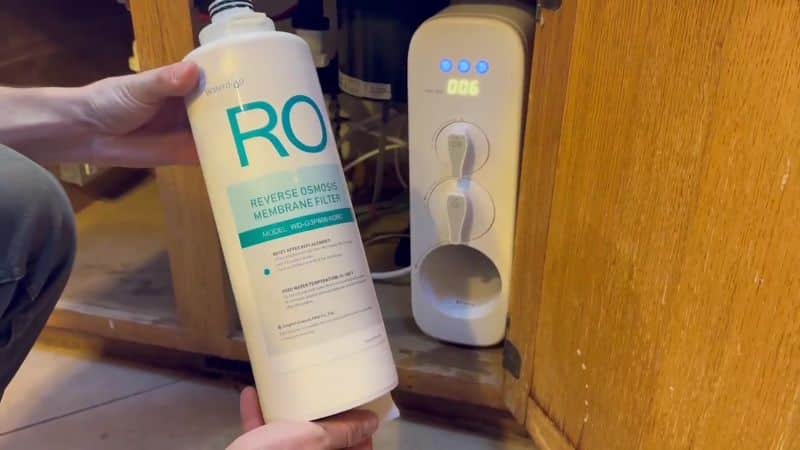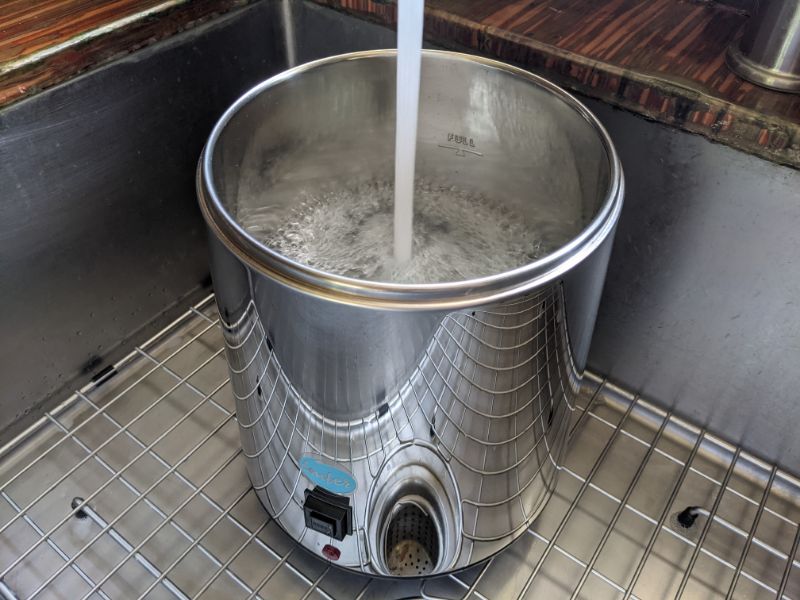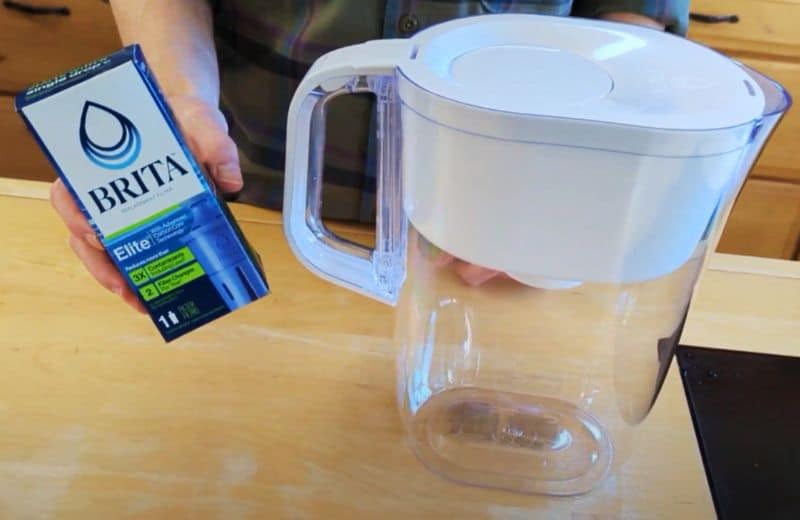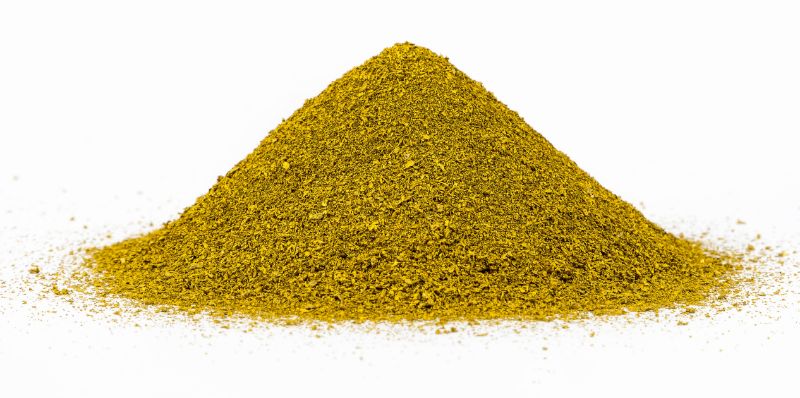If you think your water contains lead, act fast – lead is highly toxic and can cause serious health problems.
The team at Water Filter Guru has tested dozens of water filters that can reduce lead in water, and we’ve noticed a few features that they have in common. In this guide, we’ve shared the most effective methods of removing lead from your water supply.
📌 Key Takeaways
- Reverse osmosis, water distillation, special activated carbon filters, and KDF-55 and -85 filters are all the best water treatment methods to remove lead from drinking water.
- Methods that AREN’T effective at reducing or removing lead include boiling water, water softening, and using a basic activated carbon filter.

Table of Contents
🚰 Reverse Osmosis Systems
Lead reduction rate: 97-99.1%
Reverse osmosis filtration systems also purify water, reducing up to 99.1% of lead and hundreds of other total dissolved solids (TDS).
How it Works
In a reverse osmosis system, water is forced through several filter stages and a reverse osmosis membrane. The membrane’s pores are tiny, rejecting most contaminants, including dissolved lead ions.
The rejected contaminants are flushed down a drain in the system along with a small amount of wastewater.
Manufacturers of RO systems can apply for an official performance certification to NSF Standard 58, to prove the system’s contaminant reduction abilities. A reverse osmosis unit with an NSF 58 certification for lead reduction is guaranteed to reduce lead according to the manufacturer’s claims.

The Evidence
We found the most evidence in support of reverse osmosis systems as an effective lead reduction solution.
Here are some of the studies we want to highlight:
- A 2019 review of point-of-use devices for lead reduction referenced several studies into the effectiveness of RO for removing lead in drinking water. These included:
- A study that found reverse osmosis systems capable of reducing up to 97% of lead, down from initial concentrations of 930 µg/L.
- A study that tested a single-stage reverse osmosis unit and found it capable of removing up to 99% of total lead.
- A 2022 study on the performance of two RO pilot plants in Bolivia concluded that these systems efficiently rejected close to 99% lead and arsenic in drinking water.
- The CDC lists reverse osmosis as one of the water treatment systems that “will remove” lead.
Best For
RO filters are highly effective and provide thorough filtration. They’re the best solution for folks with bigger budgets who want to invest in a system that virtually eliminates lead and many other contaminants.
⚗️ Water Distillers
Lead reduction rate: 98-99.99%
Water distillation is another water purification method, like reverse osmosis, that reduces hundreds of impurities in water. It’s one of the best water treatment methods that removes lead entirely from tap water.
How it Works
Water distillation takes place in a distiller, a countertop machine that purifies water through evaporation and condensation.
When water evaporates, most of the dissolved impurities are unable to vaporize with the water particles, so they’re left behind in the boiling chamber. Lead is one of these contaminants.
The purified water condenses back into liquid form and collects in a clean, separate container.

The Evidence
We struggled to find studies that examined the effectiveness of water distillers for lead reduction because they’re already so widely known as being capable water purification systems. Here’s some of the research we found:
- This 2021 Climate Portal report on a new method for lead removal quoted a graduate student involved in the study, who said that distillation was an “existing process” for reducing lead and could “remove everything at once”.
- Lead is also listed in a report by the University of Nebraska’s Water Quality Educator and Environmental Engineering Specialist as one of the contaminants that can be reduced by distillation.
Best For
Water distillers are best for folks who want a low-maintenance alternative to reverse osmosis systems for reducing lead and purifying water, without the hassle of filter changes and water waste. However, the distillation process takes a very long time – up to 5 hours per gallon of water distilled – so it’s not ideal for people who want a quick way to remove lead.
🔮 Special Activated Carbon Filters
Lead reduction rate: 70-99%
Some activated carbon filters with a pore size of 1 micron or smaller can effectively reduce lead.
Our advice is to look for a filter with an NSF, WQA, or IAPMO certification to NSF/ANSI Standard 53, specifically for lead removal, which is the best proof of performance that you’ll find. The Centers for Disease Control (CDC) recommends this too.
How it Works
Activated carbon filters adsorb contaminants into their media. However, lead is not one of the contaminants that can be adsorbed by activated carbon.
That’s why you’ll need to go for an activated carbon filter with a pore size of 1 micron or smaller. Any dissolved lead in water should get trapped in the filter’s pores due to being too large to pass through.
This won’t work if you use a higher-micron carbon filter – for example, a 5-micron filter – as the pores will be large enough for the lead particles to travel through.

The Evidence
We found numerous studies on the effectiveness of activated carbon for removing lead, but further research revealed the need for specific stipulations or requirements that a typical point-of-use carbon filter wouldn’t meet.
- The review of POU lead removal systems that we referenced earlier also highlights a 2010 study of pour-through activated carbon devices, which found that these systems removed up to 99% of total lead.
- A 2019 study on using commercial activated carbon (CAC) for reducing lead concluded that CAC could adsorb 52% lead within 5 hours of contact time, with a 5.0 pH and carbon dosage of 100 mg. This tells us why adsorption of lead isn’t practical with an at-home water filter, which gives water a much shorter contact time with the filter and is typically used with neutral or slightly alkaline tap water (pH 7.0+).
- The US EPA says that activated carbon is a “viable treatment technology” for lead removal, based on a critical review of the literature discussing this filter media.
Best For
Activated carbon filters are typically found in affordable water treatment systems, including water filter pitchers and faucet filters. They’re a great choice for folks who have smaller budgets and don’t want to spend a fortune on a lead reduction solution. Just be sure to check that the filter is tested and certified for reducing lead before you spend your money.
📥 KDF-55 and KDF-85 Filters
Lead reduction rate: 85-98%
KDF-55 and KDF-85 filters can both reduce lead alongside other heavy metals.
KDF media is commonly used alongside other filtration media, like activated carbon, to enhance its performance abilities. For instance, you might find a water filter pitcher that contains carbon and KDF media, and it’s the KDF element that enables the filter to reduce lead.
How it Works
KDF filters transfer electrons between molecules in the water, converting contaminants into harmless substances using a redox reaction (oxidation/reduction).
KDF filter media may be used in backwashing systems or in filter cartridges. It’s possible to extend the lifespan of KDF media by flushing out the accumulated contaminants, making space for contaminant reduction to continue.

The Evidence
The evidence of KDF media for lead reduction isn’t as readily available online, but we still found several sources that confirmed the viability of KDF-55 and -85 for this purpose.
- This 2019 study on utilizing KDF to enhance the performance of multi-layer filters found that adding KDF media to the filter enhanced its lead reduction ability to 92%.
- This brochure on KDF process media referenced a case study where KDF media removed lead from rinse water in a printed circuit board manufacturing process.
Best For
KDF filter media is best for enhancing the capabilities of carbon filters, and this is how it’s most commonly used. It’s a great choice for anyone looking to buy a budget-friendly water filter that reduces more contaminants – including additional lead and heavy metals – than a conventional activated carbon filter.
📝 Other Filters That Reduce Lead
There are a few other water treatment systems that also reduce lead. We generally don’t recommend them as frequently as our top four methods, but they’re still worth considering.
These are:
- Ceramic filters – These are commonly used in countertop gravity-fed water filters and emergency preparation systems. We found research and data in favor of using ceramic filters for reducing lead, including this 2014 study on ceramic filters for household water treatment in Nigeria, which recorded “significant reductions” in lead and other contaminants. However, ceramic filters are less commonly found in point-of-use systems for household use in the US, which is why they’re not amongst our top recommendations for removing lead.
- Ultrafiltration – Ultrafiltration employs an ultrafiltration membrane, which is similar to an RO membrane but has a larger pore size (around 0.02 microns vs RO’s 0.0001 microns). UF membranes reject lead by blocking the particles from passing through, and should be highly effective, but we were unable to find any studies discussing the efficacy of UF for this purpose. Additionally, ultrafiltration isn’t a popular choice for at-home water treatment.
- Nanofiltration – This media is typically found in emergency preparedness filters due to its ability to capture microorganisms like bacteria. However, nanofilters also trap other dissolved particulates, from sediment down to metal ions, and this 2023 review of nanofiltration membranes called them the “ideal method” for removing heavy metals like lead. We haven’t recommended nanofiltration as a top lead reduction method because it’s typically not used in household filters, and regular backwashing is required to remove accumulated contaminants from the media.
- Activated alumina – While activated alumina is best known for its ability to reduce fluoride and arsenic, we found some evidence that suggests it can also reduce lead. A 2021 study on the removal of lead and nickel by activated alumina concluded that this media can be used as an “effective and inexpensive adsorbent” for this purpose. However, research is still lacking in this area, and activated alumina isn’t as common as activated carbon and other filter media, which is why we haven’t recommended it as a top choice.
- Cation exchange – This form of ion exchange can be used to reduce lead in ionic form (as a cation). But lead is more commonly found as a suspended solid in water, which prevents it from being exchanged in the cation exchange process. That means using a cation exchange filter will have varying levels of effectiveness depending on the type of lead present in your water.
⚠️ Which Water Treatment Methods Are NOT Effective for Lead Reduction?
Several water treatment methods aren’t effective at reducing lead in water.
Catalytic Carbon
Catalytic carbon is a form of enhanced activated carbon media that has additional contaminant reduction abilities – it can also remove chloramines and hydrogen sulfide in water.
However, this media doesn’t typically address heavy metals like lead.
Water Softeners
When present in an ionic form, lead can be reduced with a cation exchange filter.
However, a water softener (which actually does use cation exchange, with a sodium- or potassium-loaded resin) isn’t typically effective at reducing lead and is predominantly used to address calcium, magnesium, and low levels of iron. That’s because lead is most commonly present as a suspended solid in water.
Boiling Water
Boiling water kills microorganisms and causes highly volatile chemicals like chlorine to dissipate, but it can’t be used to remove lead.
When you boil water, some of the water will evaporate, which means you’ll end up with a higher concentration of lead in the same amount of water.
The reason why distillation can remove lead, but not boiling, is because distillation transfers the water molecules into a separate clean container, leaving the lead particles behind in the boiling chamber.
📑 Final Word
Lead is a highly dangerous contaminant, so if any lead is found in your water, find a water filter that can effectively reduce it as soon as possible.
If you haven’t already, test your water to find out what it contains. Many water filters address additional contaminants alongside lead, like PFAS, chlorine, arsenic, fluoride, and VOCs, which are all common in tap water in the US.
Remember, filters that are certified to NSF Standard 53, for the reduction of health-related contaminants (make sure lead is a listed contaminant), or NSF 58, for RO systems, should offer guaranteed lead reduction, so choose a certified filter if you want to be certain that you’re spending your money wisely.
Related: See the best filters for lead removal
Aside from reducing lead in your water, there are a few other ways to limit your lead exposure at home:
- Consume only bottled drinking water that’s certified as lead-free by independent testing.
- Only drink or cook with water from your cold tap.
- Remove your shoes before you enter your home to avoid carrying lead inside.
- Eat foods high in iron, protein, calcium, and vitamin C, which help decrease lead absorption.
🧠 How to Remove Lead From Water: FAQ
Can lead in water be filtered out?
Yes, lead can be filtered out of water. The best way to do this is to use a water filter with a pore size of 1 micron or less. Special activated carbon filters, KDF-55 and -85 media, and ceramic filters are all examples of systems that can remove lead by filtration.
How do you remove lead from water naturally?
The best way to remove lead from water naturally is with a water distiller, which uses only natural processes (boiling, evaporation, and condensation) to separate water molecules from impurities, including lead. You can also use a naturally produced filter, such as an activated carbon filter (make sure it has a pore size of no bigger than 1 micron), which is typically made from coconut, charcoal, and other natural materials.
Does vitamin C remove lead?
Some sources say that vitamin C can reduce lead intake in the body’s cells, however, this is widely disputed. Additionally, there’s no evidence of it being used effectively in a water filter to remove lead.
